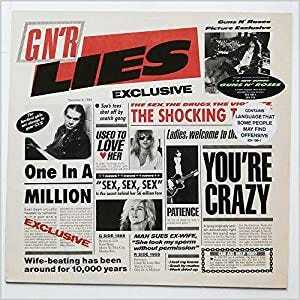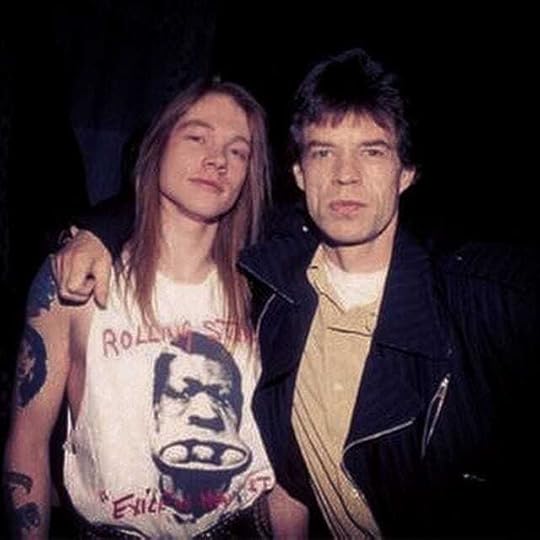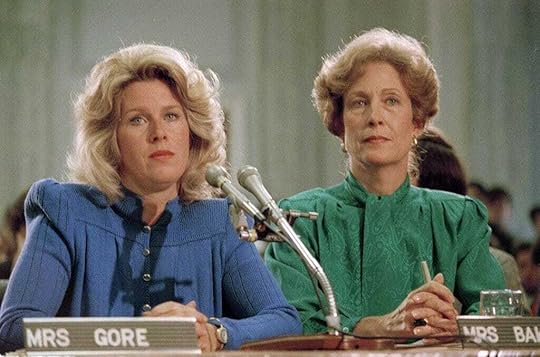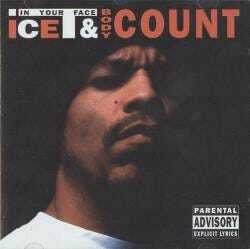that Guns N Roses song that no one dare speak of

There is one Guns N’ Roses song that every YouTuber, podcaster, blogger — let alone the mainstream media — avoids like the plague: “One in a Million” from the band’s sophomore album GN’R Lies (released Nov 29, 1988). Boomers and Gen Xers generally shrug and look the other way when it comes to this song. Millennials, on the other hand, seem absolutely flabbergasted and horrified to acknowledge that this song even exists — which shouldn’t be surprising coming from the generation that is also totally appalled by a cartoon skunk from the 1950s (google ‘Pepe le Pew meets the cancel culture).
In the context of today’s polite-to-the-point-of-whitewashed pop culture sensibilities, it’s so easy to understand why “One in a Million” is shunned so drastically. The song uses THE two most politically charged words of the 21st century; “niggers” and “faggots”. Nuff said. And, oh yeah — lead singer Axl Rose also insults Iranians and immigrants. And police… and possibly small-town white boys. So of course, aside from the actual band members and some die-hard Guns ‘N Roses fans, no one has ever really come out to defend this song against the avalanche of negativity it generated. There was negativity from rock critics and the media, as well as negativity from the record industry. It has gotten to the point that today “One in a Million” is unanimously ranked as the worst Guns ‘N Roses song by music magazines, youtube reaction channels, bloggers, and so on. However, the song is one of Guns N Roses’ top ten downloaded songs of all time. Which begs the questions: Why did Guns ‘N Roses include this song on GnR Lies? Why did they even write the song? Could there be something to the song beyond the initial knee-jerk reaction that the lyrics? To find out the answers to these questions and more, let’s start with the nuts and bolts:
In October of 1988, just one month prior to the release of GN’R Lies, “One in a Million” caused its first intense reaction as Guns ‘N Roses and the rock band Living Colour (which was comprised of an all-black lineup) were on the same bill, both slated as opening acts for The Rolling Stones. After a rock journalist pointed out the “One in a Million” lyrics to Living Colour’s guitarist Vernon Reid, Reid denounced the song to a group of radio DJs. The very next evening, Axl responded while on stage by declaring, “All you people calling me a racist, shove your head up your fucking ass.” To which Reid responded the next night, by announcing to the crowd, “If you don’t have a problem with black people, then don’t call them niggers.” Great start!

Since the song had already ruffled feathers, you might think the band would have been better off keeping “One In a Million” off of GN’R Lies. Guns ‘N Roses’ lead guitarist Slash (whose mother is black) thought so — telling Q magazine in 2010 that “I think the tone of that song was offensive”. Yet, despite the certain controversy (or perhaps because of it), Axl insisted that the song be included on side two of GN’R Lies. He did however put an apology on the album cover. The album cover, highly conscious of media manipulation, was designed to look like a front page of a mock-tabloid newspaper, in which one of the mock articles is titled ‘One in a Million’ and said this: “This song is very simple and extremely generic or generalized, my apologies to those who may take offense.” Which seems to suggest that Axl knew the song was going to cause a shit show and he was certainly courting controversy by releasing it. In fact, in the recording of the song itself, after singing ‘niggers’ Axl says, “That’s right” in a confrontational way as if he is saying, “That’s right I said it. So fight me!”

For millenials who were too young to remember, and Zoomers who weren’t born yet, 1988 was a time in American pop culture in which Rawk lyrics were actually being scrutinized at the top levels of the American government.* Just three years earlier, a group of ‘Washington Wives’ led by Tipper Gore (wife of future vice-president Al Gore) created the Parents Music Resource Center to launch a campaign against dirty lyrics in Rock ‘N Roll. An ensuing cultural drama played out to a packed house during a Congressional Senate Hearing that included such surreal moments as Florida Senator Paula Hawkins playing the music video for Van Halen’s “Hot For Teacher” to a bunch of crusty 80-year-old white, millionaire Senators — followed by “Country Roads” singer/songwriter John Denver comparing the proceedings to Nazi book burnings. Then, Frank Zappa, who appeared as a witness, famously commented on the Senate agreeing to hold such a ridiculous hearing thusly: “A couple of blowjobs here and there and Bingo! — you get a hearing.” The end result was that the Record Industry Association of America agreed to put “Parental Advisory” labels on albums they deemed risque. A number of bands like Megadeth, Metallica, Aerosmith, Sonic Youth, and others, immediately took the decision as a challenge and wrote songs that mocked Tipper Gore and the ‘Parental Advisory’ labels. Rock Rap artist Ice-T, in particular, took the challenge to heart by releasing the song “Freedom of Speech” which contained the lyrics:
Yo, Tip, what’s the matter? You ain’t gettin’ no dick?
You’re bitchin’ about rock ’n’ roll — that’s censorship, dumb bitch

Predictably, albums that had the RIAA warning labels stuck to them, became fast sellers and by the time GN’R Lies came out, it wouldn’t be the wildest notion to think that Guns ‘N Roses might have wanted one of those ‘adult advisory’ labels on the album, as a badge of honor.
Axl Rose however denied that he wrote the song just to garner attention and cause controversy. In fact, in interviews following the release of GNR Lies, Axl began going to great lengths to explain why he wrote “One in A Million”. The song was the first GnR song that he wrote entirely on his own. It is a very personal song and he cites numerous life experiences that helped generate the lyrics — from being harassed by aggressive gay men, to being hustled by black men, to being treated poorly by immigrant store owners and police officers. All of which suggests that maybe the song was part of a process in which Axl was trying to work something out. It suggests that Axyl was using the creative process to work out his thoughts and feelings, instead of allowing those thoughts and feelings to manifest in some more destructive (drug use) or even violent manner. Being an artist, Axl’s process included throwing his thoughts and feelings out there to the world and then gauging the world’s response. To be honest you can’t really control what feelings and thought come to you. Thoughts and feelings come from the unique experiences we all have. But you can be aware of what you feel and what you think. And being self-aware is an important step in the process of growth and evolution. Which, if we are to give Axl a poetic license, we could argue that his expression of his thoughts and feelings was just his artistic way of trying to figure out who he was. Maybe he was using the creative process and the machinations of the pop culture media to get there. And if that is the case, then shouldn’t the song be celebrated instead of destroyed? Shouldn’t it be an example that others can look to as inspiration — especially those who are struggling with their value system? “One In a Million” could simply be a great example of how to channel hurtful and hate-filled thoughts into something creative. So why whitewash it?
*There were also several lawsuits during this period in which Heavy Metal acts like Judas Priest and Ozzy Osbourne were in court defending their song lyrics after incidents in which fans in California, Georgia, New Jersey, and Nevada killed themselves while listening to their albums.
[image error]who will save rock n roll?
- Ed Wagemann's profile
- 67 followers



